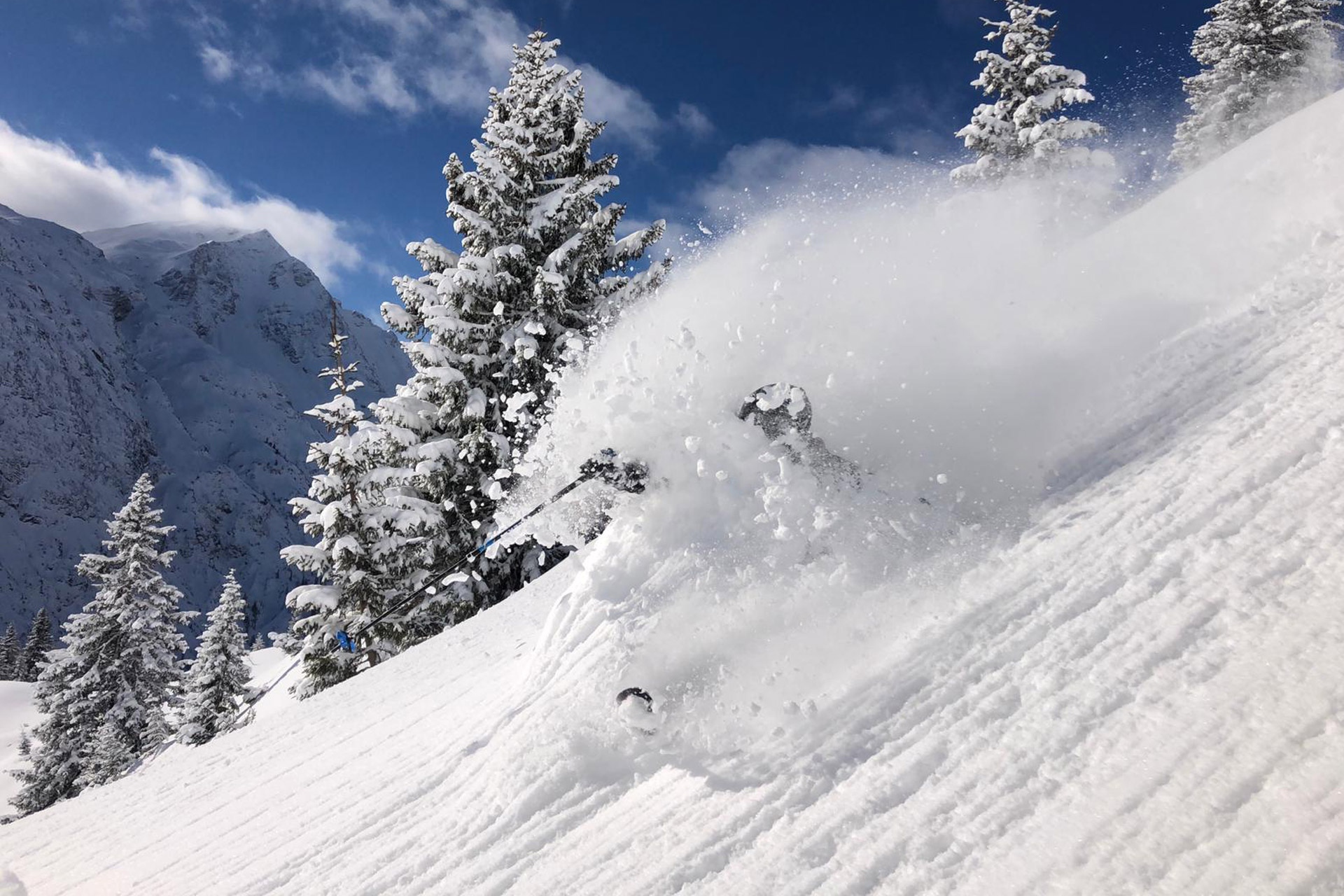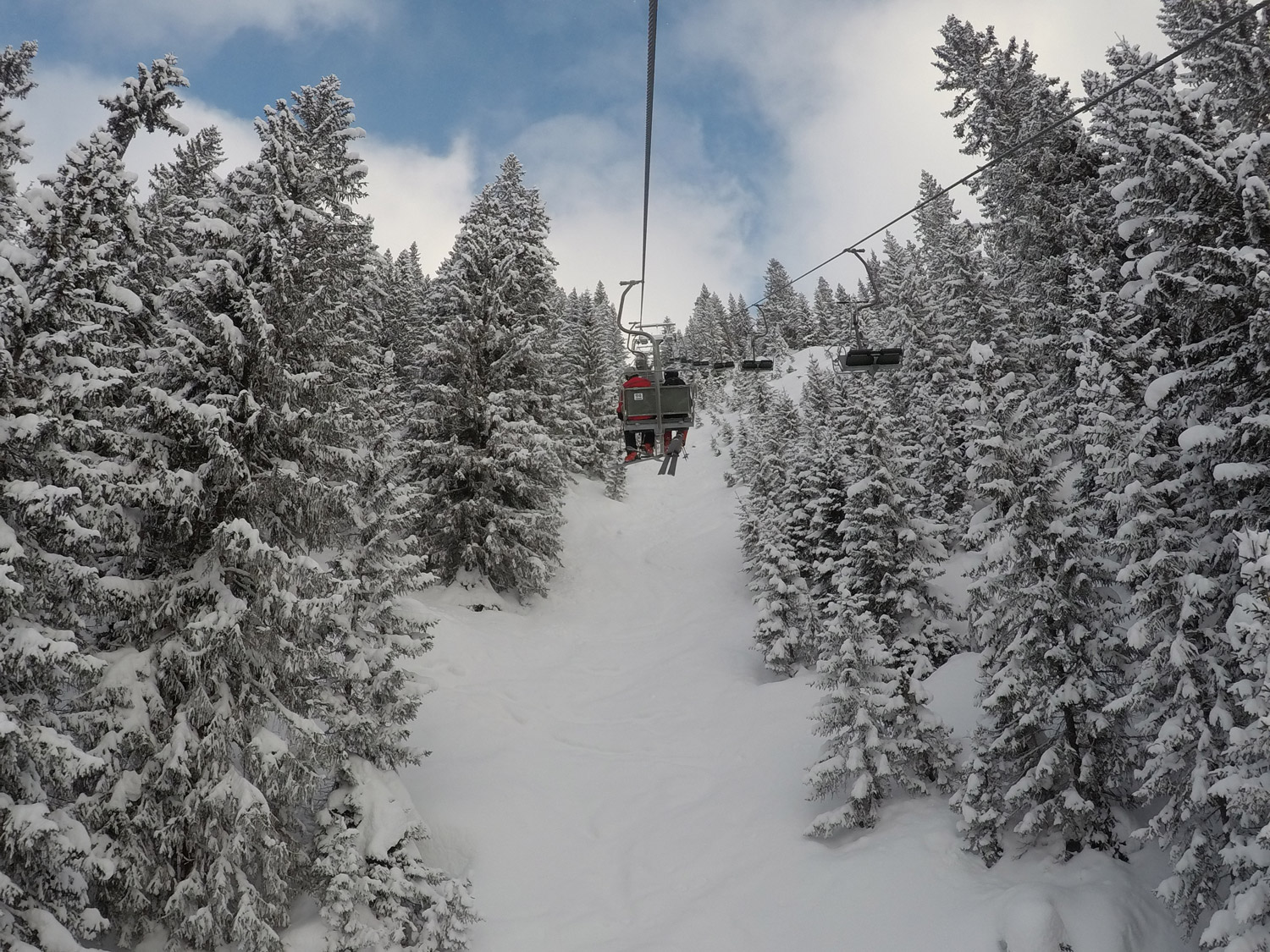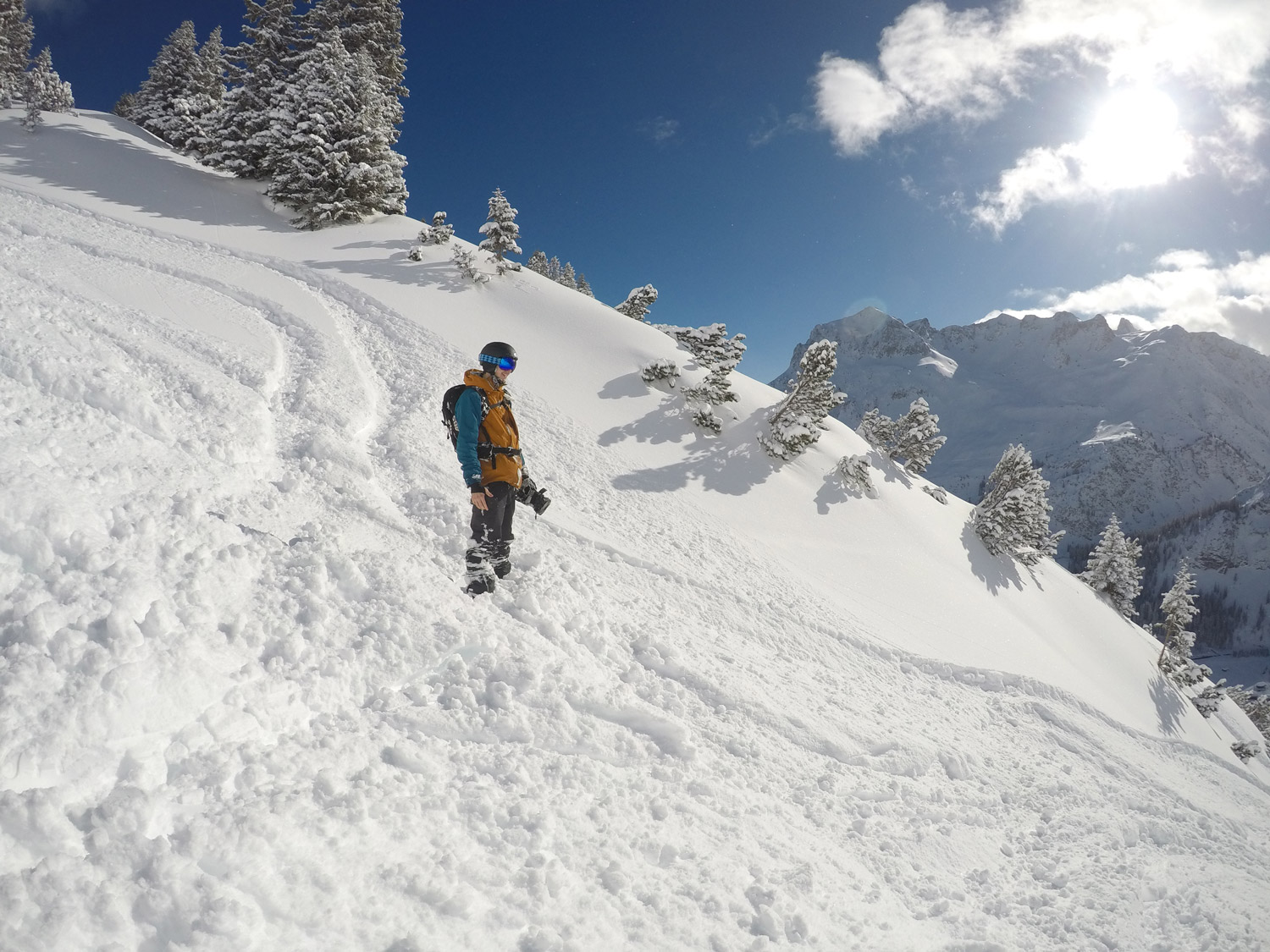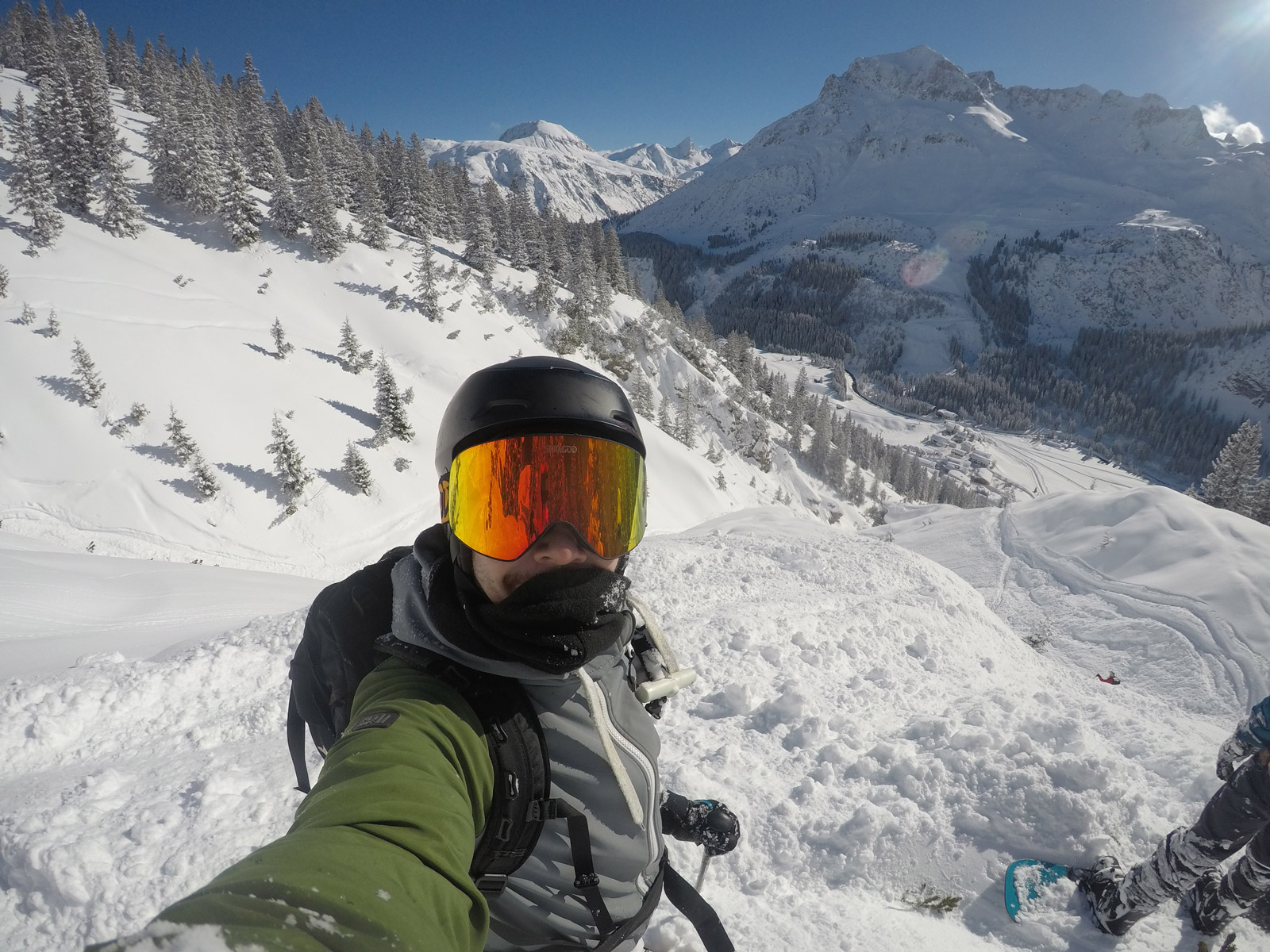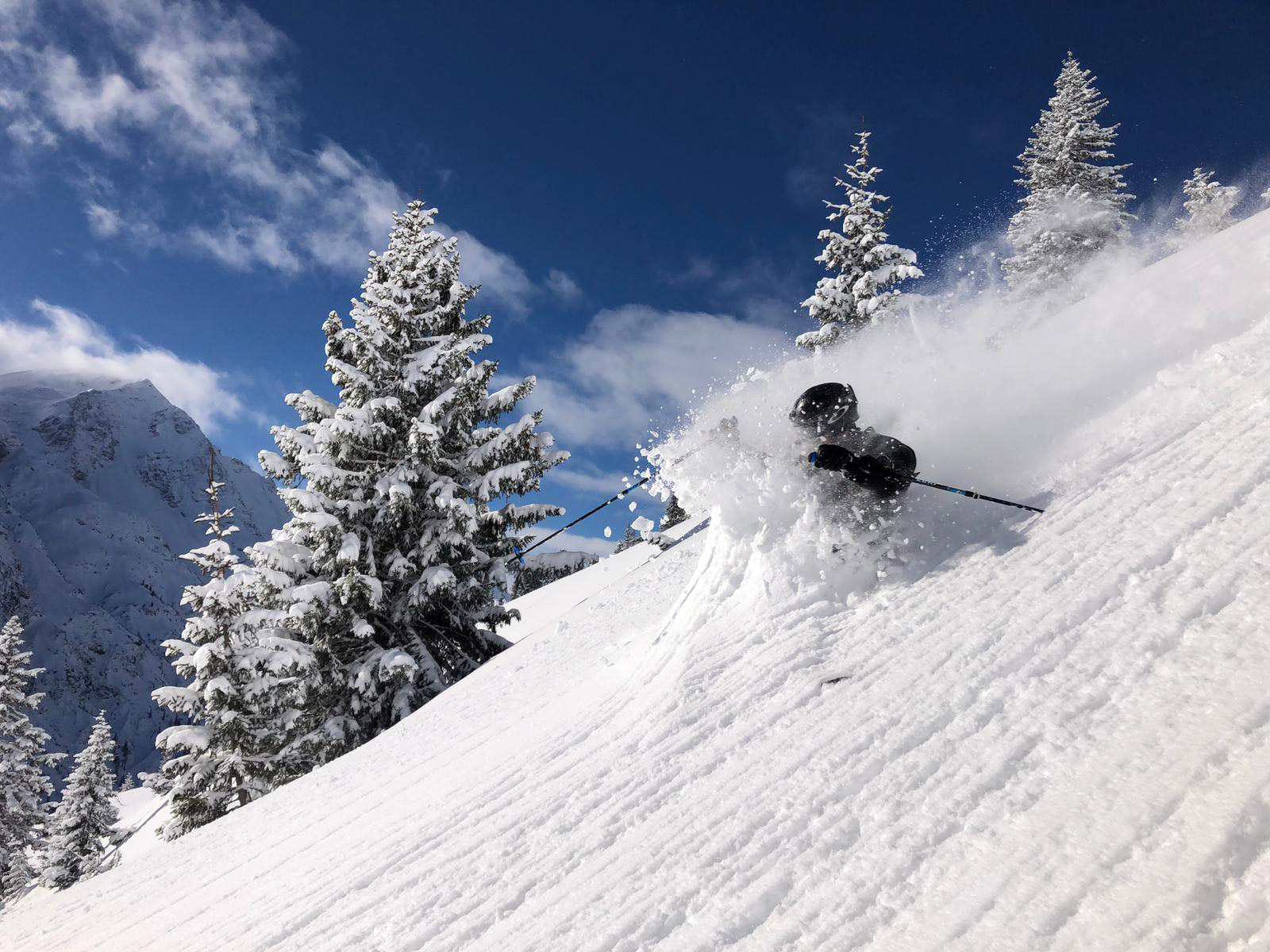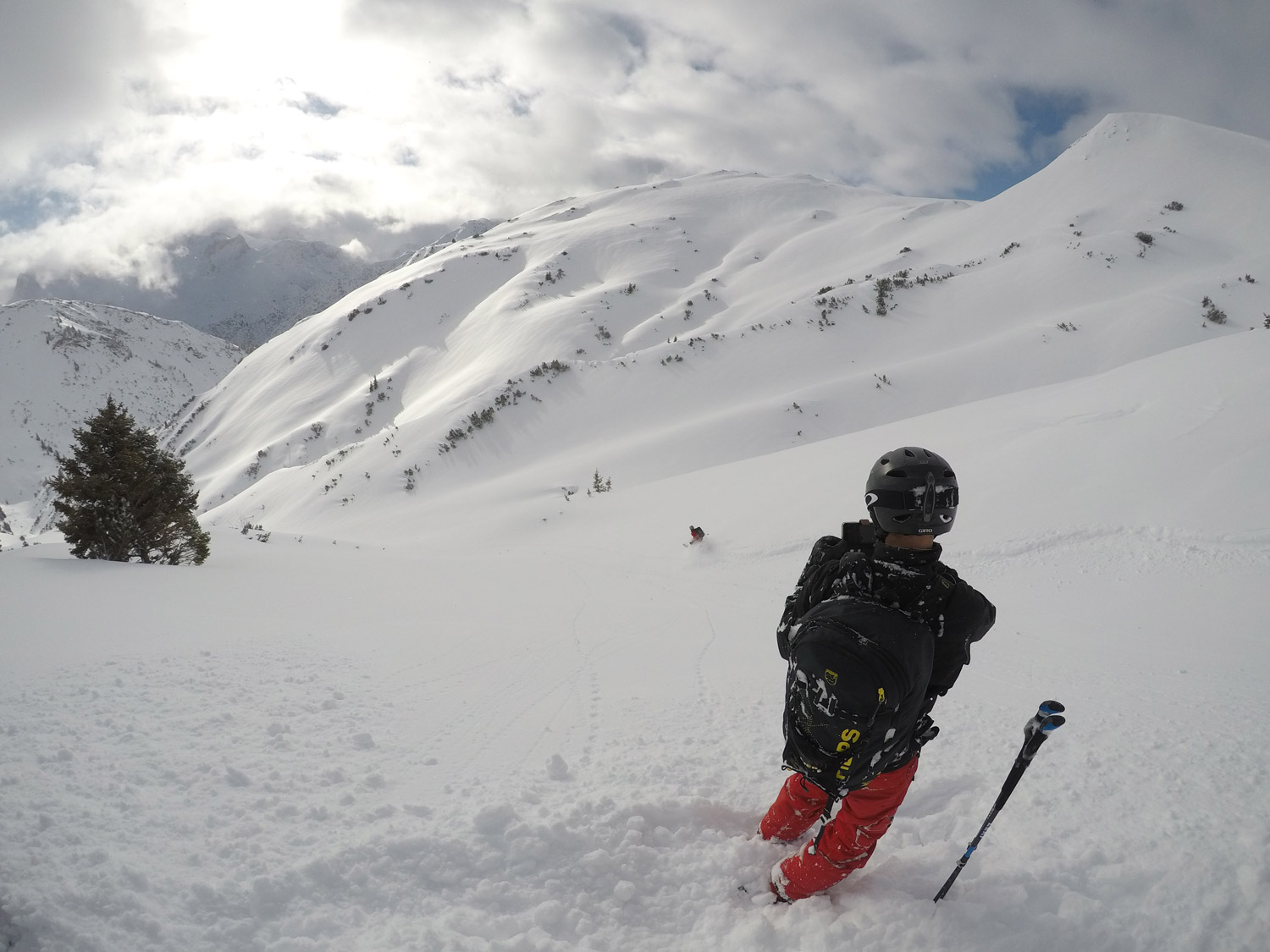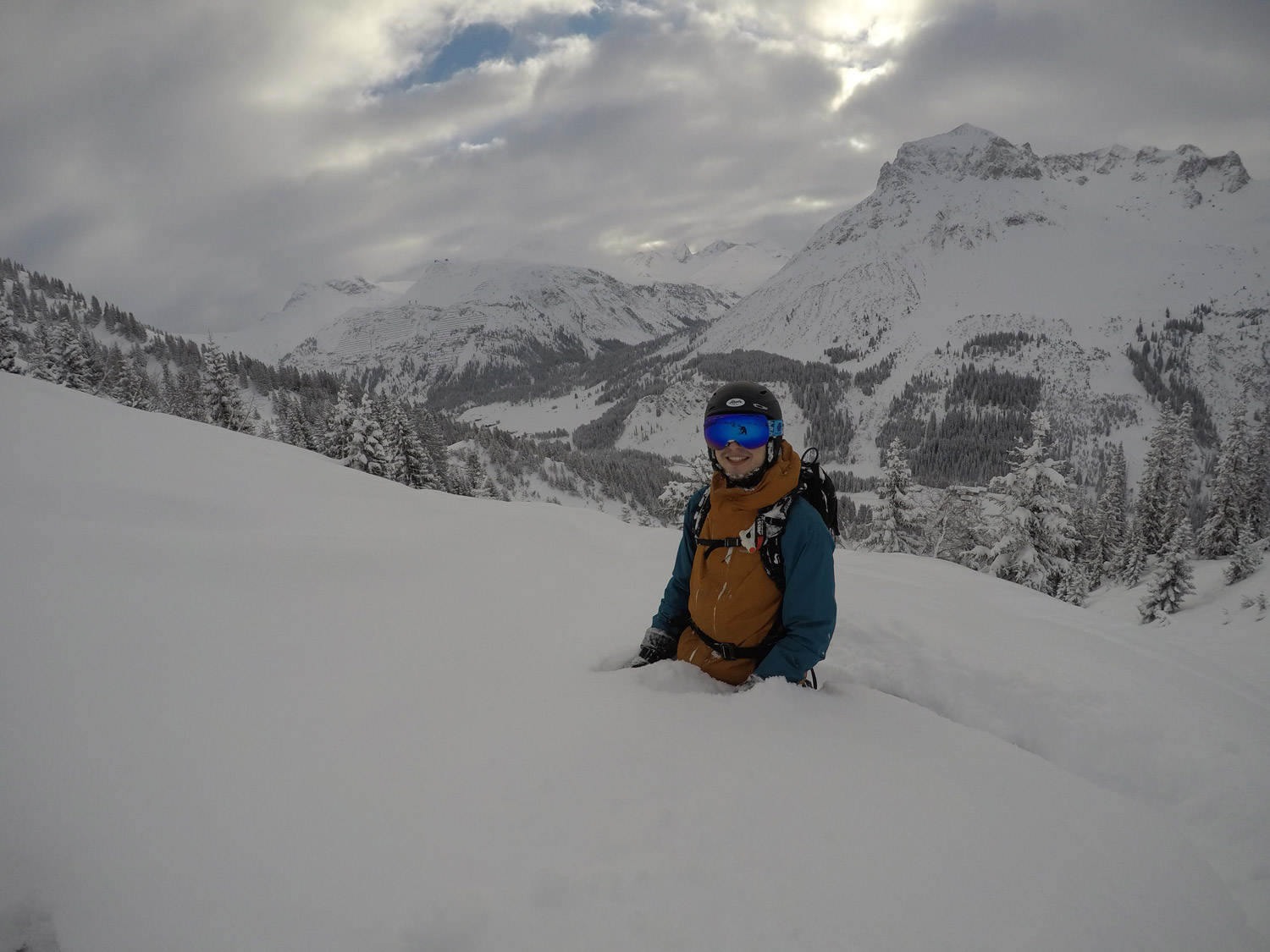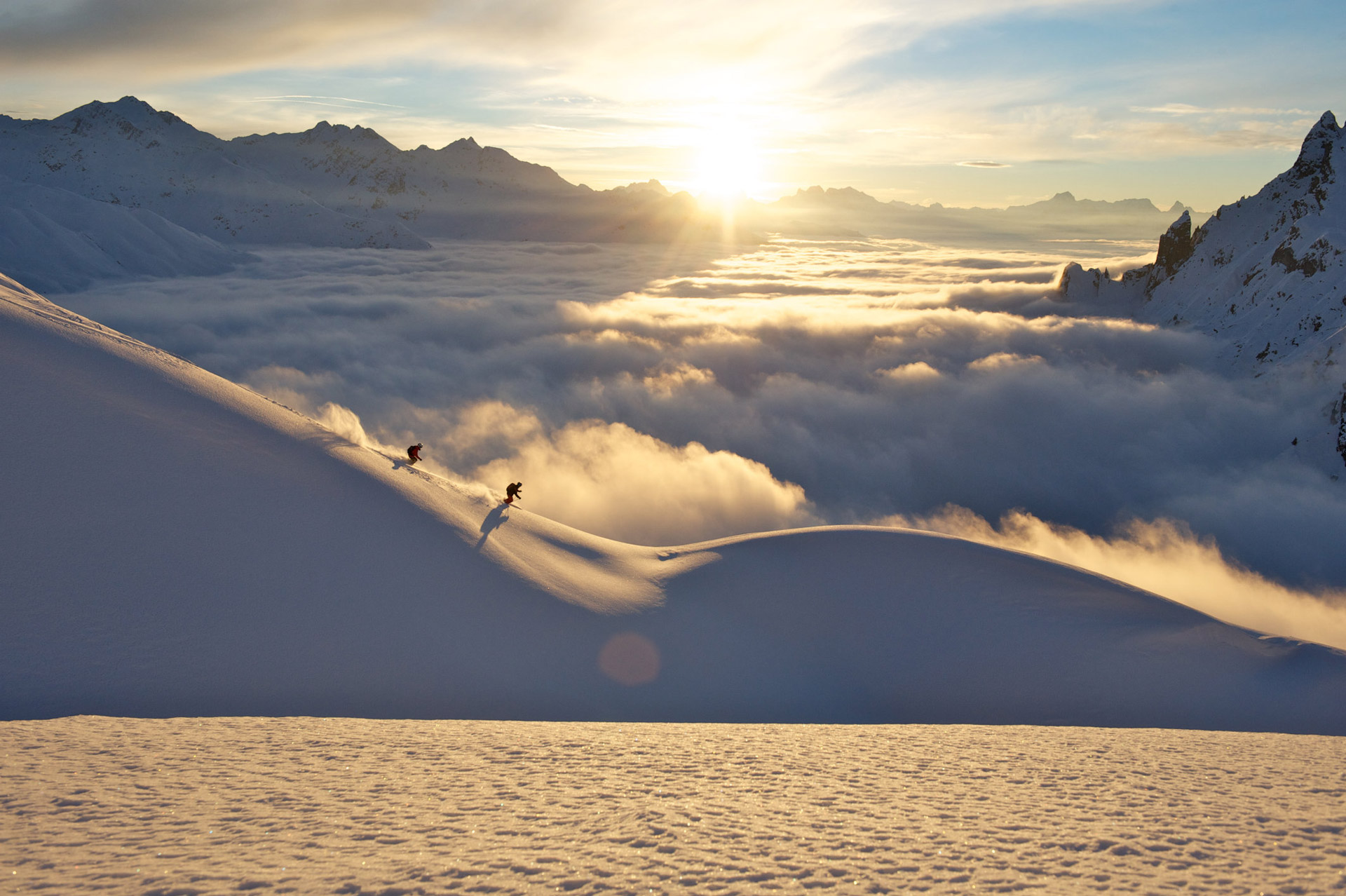Featured Image: Hans-Peter Martin
There are blue skies above us and an untouched valley of fresh powder at the tips of our skis. It’s been a long time coming, this. Not the journey to this particular spot, a mere 10-minute traverse from an easily-accessed chairlift in Lech am Arlberg, but the actual wait to get out to Austria itself.
It feels like there’s been as much written about the record snowfall in Austria this year as there has been snow, and on the mountains of Lech, that checks out.
All that snow hasn’t come without its issues, though.
“They were only about 15 metres off the piste when the snow broke around them”
A friend and member of our skiing group, Manuel, found himself having to dig a stranger out of an avalanche on our first day in resort, only about three hours after clipping in.
The skier didn’t have a transceiver or an airbag. They were only about 15 metres off the piste when the snow broke around them, but down it came, and it took the group – the national Austrian media reported – 12 harrowing minutes to find him and get him back out.
It felt like an eternity longer from the slopes.
He came out of the snow, thankfully, conscious and speaking, and was rushed off to hospital.

